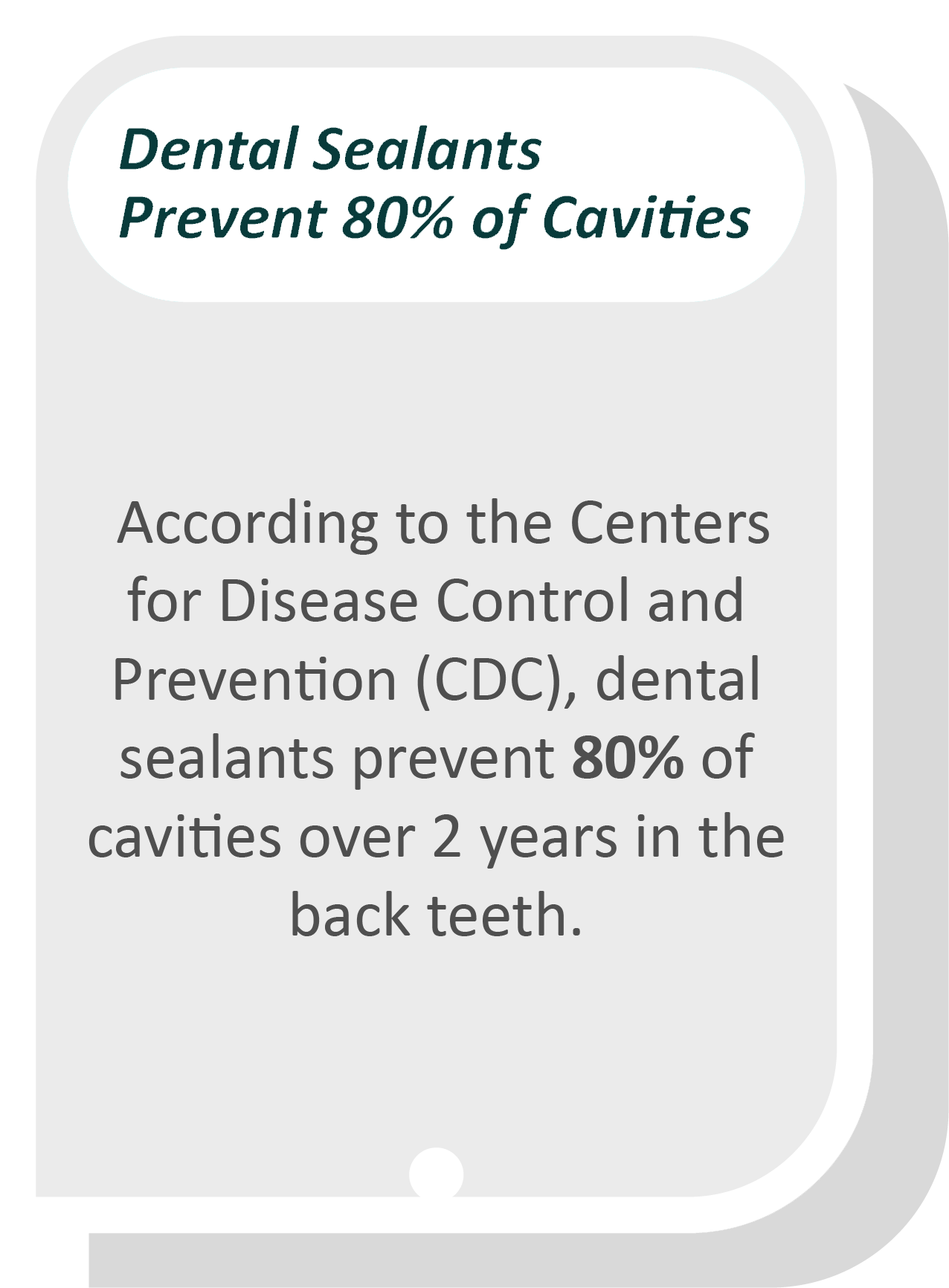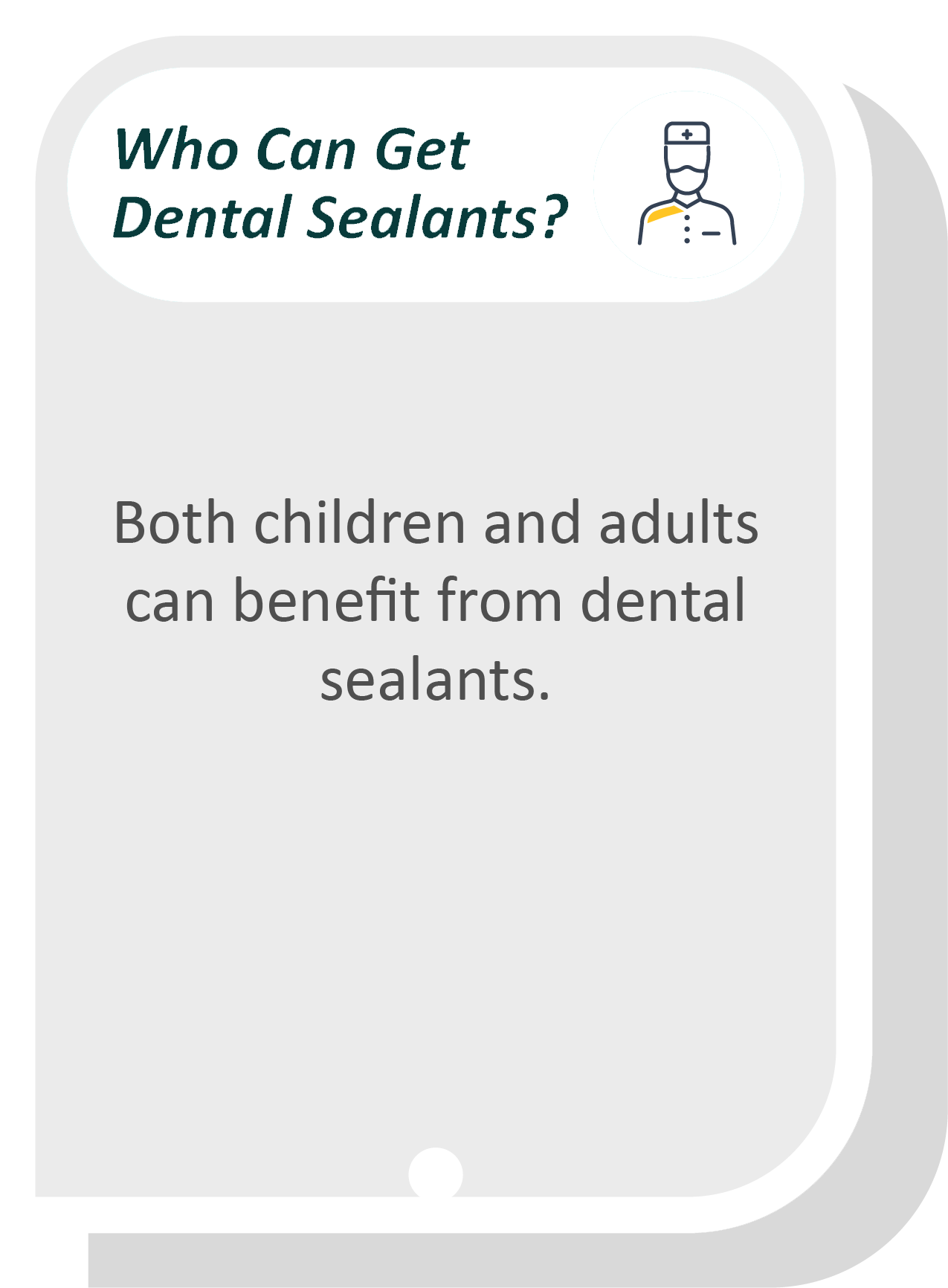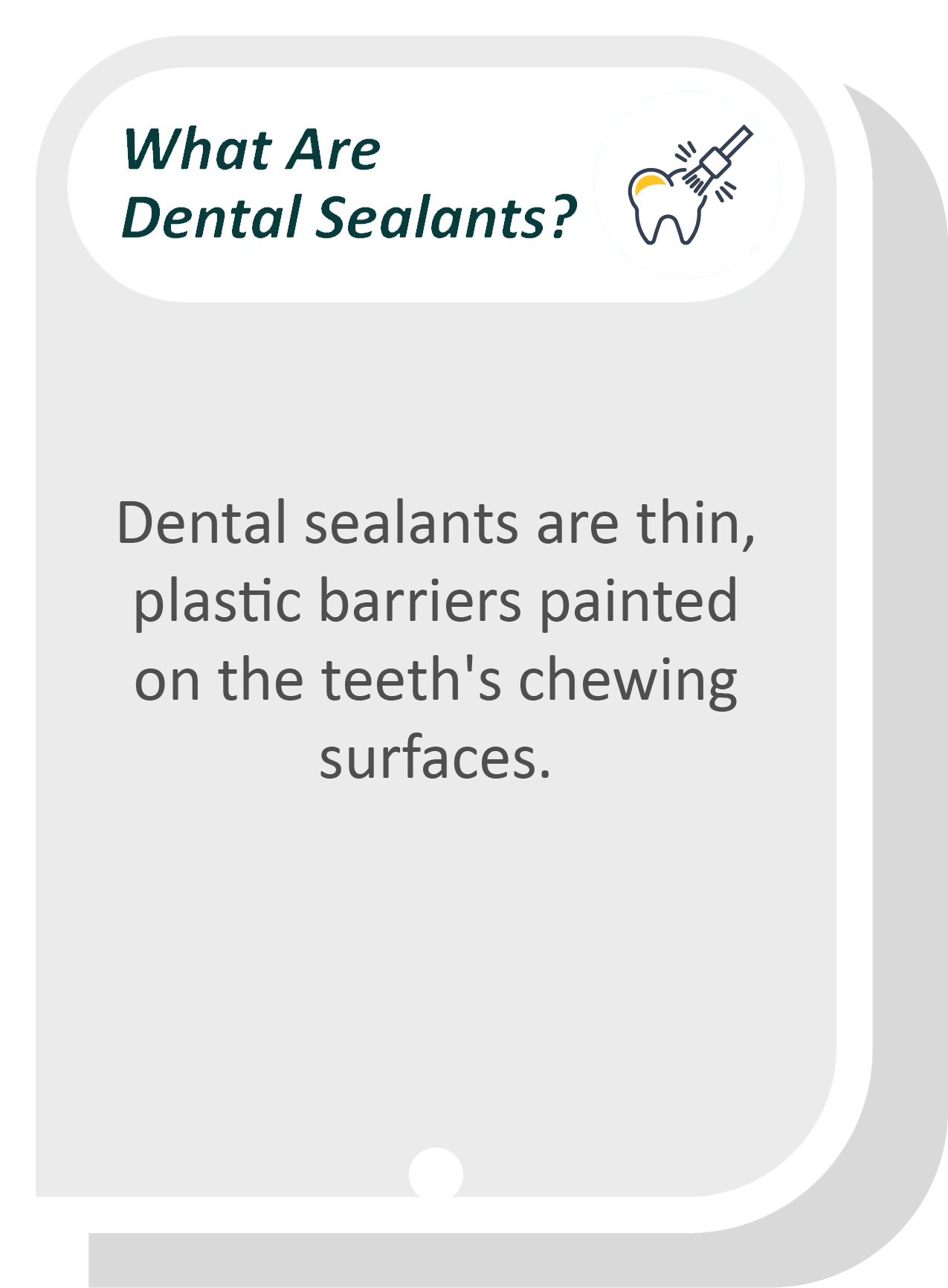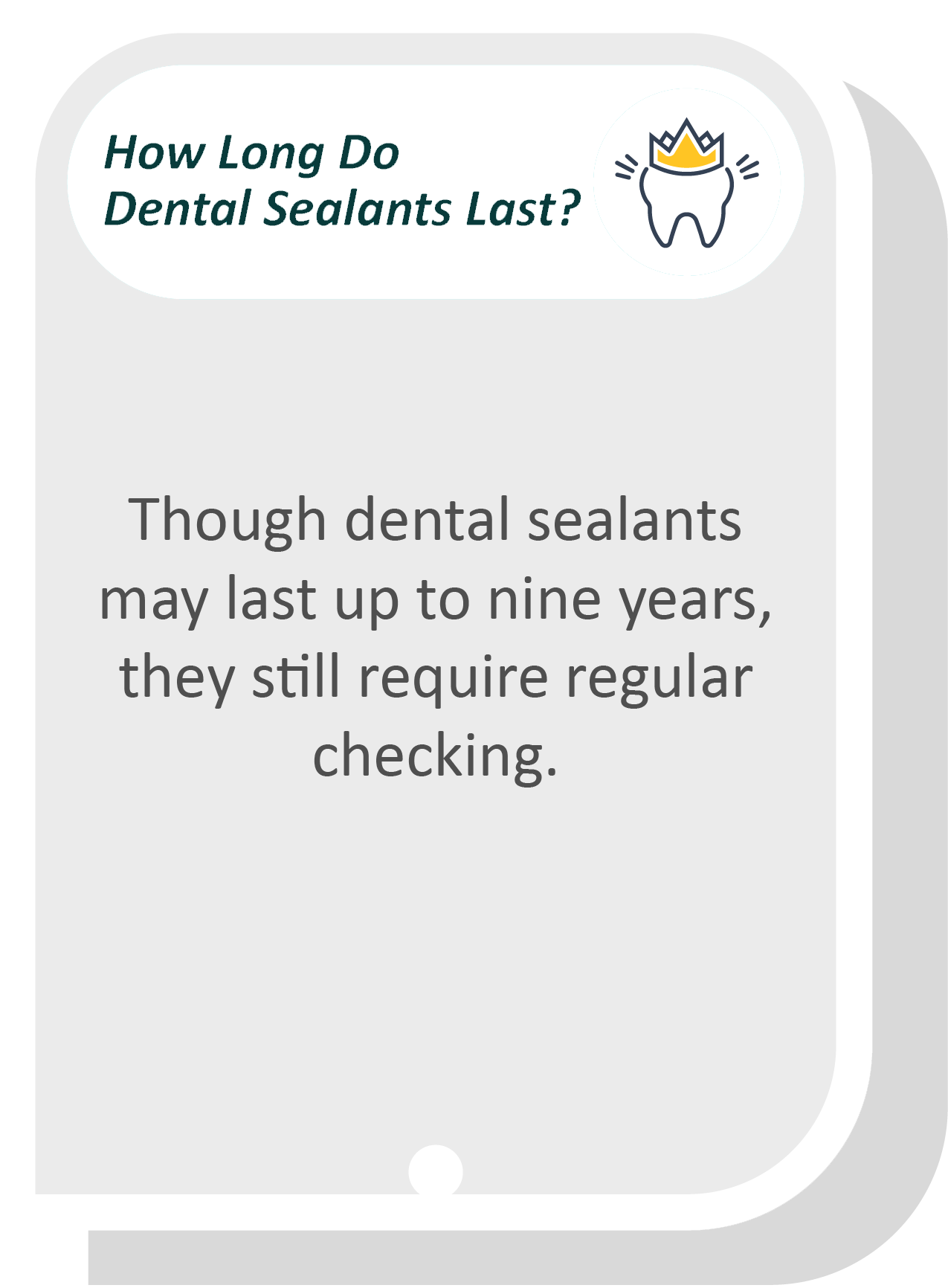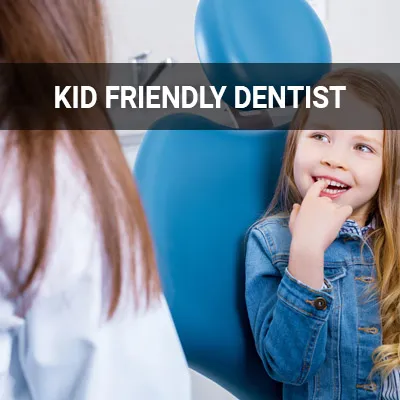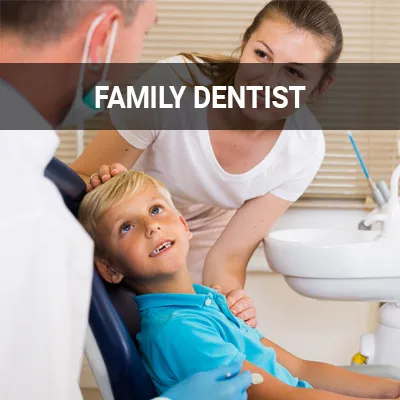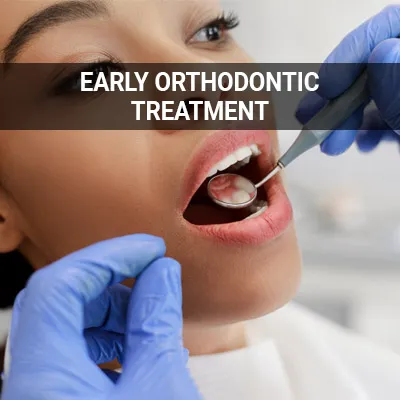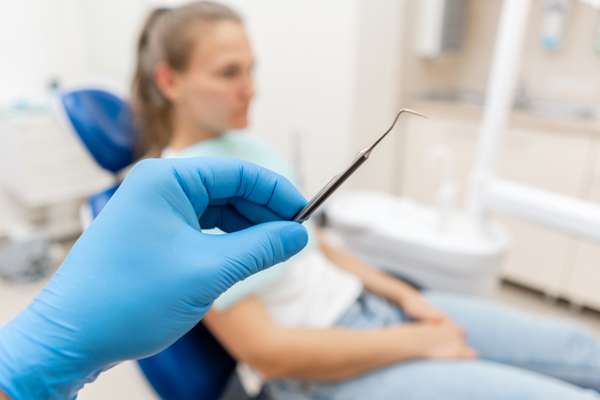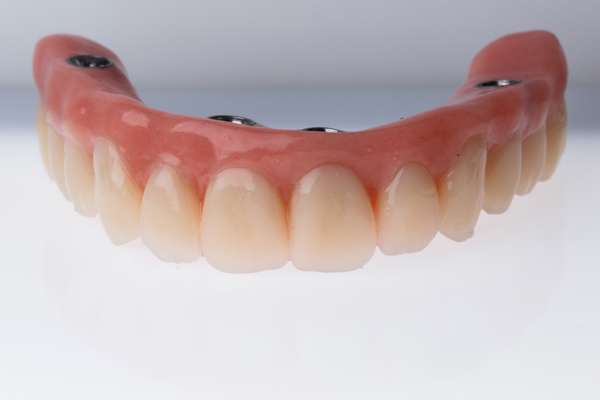Dental Sealants Livermore, CA
Bacteria love to find all the nooks and crannies in teeth, especially in the back teeth used to chew. In addition to brushing and flossing, dental sealants provide another layer of protection. This thin plastic coating fills and adheres to the chewing surface of the teeth to help prevent cavities.
Dental sealants are available at Livermore Dental Spa in Livermore and the surrounding area. Our staff can discuss the procedure and answer any questions. Call us at (925) 344-3993 to learn more and schedule an appointment.
Understanding Dental Sealants
While brushing and flossing are integral to maintaining oral health and preventing cavities, some teeth have uneven surfaces that can be difficult to clean. Dental sealants are a beneficial addition to a comprehensive cavity management approach. These thin plastic coatings cover the surfaces of children's teeth and act as a protective barrier against debris, acid, and plaque.
Although dental sealants are not a replacement for a good oral hygiene routine, they can stop cavities from forming and even prevent early dental decay stages from developing into a cavity. The application of dental sealants can protect patients against 80% of cavities for two years and protect against 50% of cavities for up to four years, according to the Centers for Disease Control and Prevention (CDC). Sealants are a quick and painless preventative measure to protect children's oral health and prevent the need for more invasive procedures in the future.
“Although dental sealants are not a replacement for a good oral hygiene routine, they can stop cavities from forming and even prevent early dental decay stages from developing into a cavity.”
The Right Age for Sealants
Both children and adults can benefit from sealants, but the earlier they are put on, the better the long-term outcome. Children should get sealants on their permanent molars as soon as they come in. The first molars usually appear around six years old and the second molars roughly six years later. Sealants will protect teeth through a child's most cavity-prone years.
Dental sealants may also benefit baby teeth. Since baby teeth play such an important role in the correct spacing of permanent teeth, it is important to keep those teeth healthy and in place until they are ready to come out. When determining whether to have sealants applied to a younger child, make sure the child can keep their mouth open for an extended period and sit still for the procedure.
“Children should get sealants on their permanent molars as soon as they come in.”
The Advantages and Disadvantages
In addition to their protective properties, dental sealants have longevity and durability. Research has shown they prevent 80% of cavities for two years after application and continue to protect against 50% of cavities for up to four years. Sealants can even stay in the mouth for as long as nine years.
There are some disadvantages. Children may need to have sealants reapplied if they fall out, chip, or wear away. Dental sealants can get chipped or worn when a patient bites into hard food or eats too much food with high acidic content. It's best to keep a close eye on what a child with sealants consumes, especially right after the sealant is applied. A patient's bite can feel slightly off after application due to the extra layer on the tooth, but this is temporary. During a regular dental visit, we will check the sealant's condition and reapply them as needed. Sealants need to be monitored and maintained during routine visits to ensure they do not wear away.
“In addition to their protective properties, dental sealants have longevity and durability.”
Check out what others are saying about our dental services on Yelp: Dental Sealants in Livermore, CA
The Application Process
The process of applying dental sealants is quick and painless. Before we can apply the sealants, we must first thoroughly clean and dry the tooth. After, an acidic gel roughens the chewing surface of the tooth to roughen it up.
The roughened surface will create a stronger bond between the tooth and the sealant. Once the tooth is rinsed and cleaned, we will apply the sealants to the tooth enamel and harden it with a curing light. The entire process of applying a dental sealant to a tooth only takes about one minute.
“The entire process of applying a dental sealant to a tooth only takes about one minute.”
Questions Answered on This Page
Q. What's the right age to get sealants?
Q. What are some of the advantages and disadvantages of dental sealants?
Q. The key to understanding dental sealants?
Q. What is the application process for dental sealants?
Q. What are kids' reactions to dental sealants?
People Also Ask
Q. What are composite fillings?
Q. What is involved in the dental cleaning portion of a checkup?
Q. Can sealants protect against cavity-forming bacteria?
Q. Why should I see a family dentist?
Kids’ Reactions
Most children can handle receiving dental sealants since the application process is relatively quick and painless, and there are no restrictions afterward. Once their sealant hardens, children are free to eat and drink and resume their normal activities. Dental sealants may feel odd at first, but once children adjust, they will not even notice that they are on their teeth.
While the application process is straightforward, it does require teeth to be clean and completely dry. These standards can be difficult for children with sensitive gag reflexes or an active tongue. In such cases, we may recommend waiting six months to a year to allow greater patient cooperation.
“Dental sealants may feel odd at first, but once children adjust, they will not even notice that they are on their teeth.”
Frequently Asked Questions
Q. Are dental sealants safe?
A. Dental sealants are safe and effective for patients. While some people may be concerned about bisphenol A (BPA) exposure, according to the American Dental Association (ADA), the amount is so minimal that there is no health concern. Patients get more exposure from food, drinks, sunscreen, and cosmetics.
Q. Do dental sealants hurt?
A. Getting a dental sealant does not hurt. Patients may notice the dental sealants on their teeth at first. However, this is temporary as people will adapt to the new feeling and not notice them anymore.
Q. How should I take care of my sealants?
A. Brushing and flossing remain important even when sealants are present. We also recommend that patients avoid chewy, sticky, or hard foods and snacks. Patients with sealants should also have regular dental check-ups to ensure that they are still effective and do not need replacing.
Q. Are there any side effects associated with dental sealants?
A. No. The only known side effect associated with dental sealants is an allergic reaction to the sealant material. This allergy is not common, but patients can have an allergy test beforehand as a precaution.
Q. How do dental sealants look on teeth?
A. Dental sealants are thin plastic coatings that help smooth out the rough surfaces of back teeth. They can be clear, tinted, or white. While sealants can be visible on teeth, they are not usually visible since they are at the back of the mouth.
Dental Terminology
Helpful Related Links
- American Dental Association (ADA). Glossary of Dental Clinical Terms. 2024
- American Academy of Cosmetic Dentistry® (AACD). Home Page. 2024
- WebMD. WebMD’s Oral Care Guide. 2024
About our business, license, and website security
- Livermore Dental Spa was established in 2023.
- We accept the following payment methods: American Express, Cash, Discover, MasterCard, and Visa
- We serve patients from the following counties: Alameda County, Contra Costa County and San Joaquin County
- We serve patients from the following cities: Livermore, Alameda, Pleasanton, Dublin, Ulmar, Tracy, San Ramon, Danville, Mountain House and Castro Valley
- CA (License #101519). View License Information and Specifics
- National Provider Identifier Database (1679095681). View NPI Registry Information
- Healthgrades. View Background Information and Reviews
- Norton Safe Web. View Details
- Trend Micro Site Safety Center. View Details
Back to top of Dental Sealants

